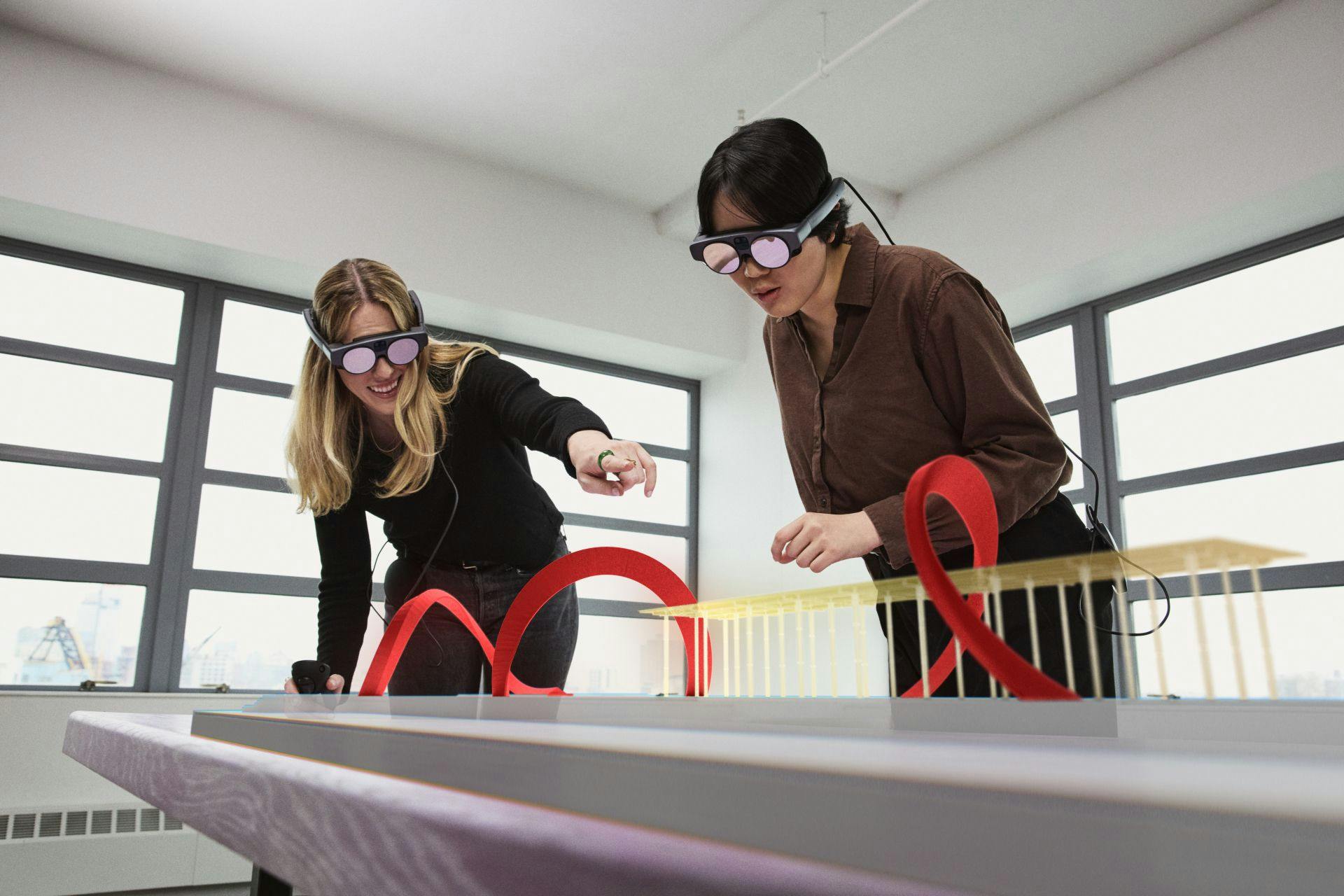Blog
March 14, 2024
Enhancing Design Visualization for AEC: How HUSH Transforms Design Visualizations Using AR
Exploring HUSH’s integration of Magic Leap Workshop for collaborative, real-time iteration and design reviews of architectural designs at scale.

One of the greatest challenges facing architecture and experiential design firms today is the ability to communicate their creative vision for a project in a way that clients can truly understand. The pre-visualization phase of a project, when the design is being conceptualized, reviewed and finalized, is by far the most demanding. Traditionally, designs for spaces would be presented first in 2D drawings, then in 3D models on a computer screen, and finally in a physical, miniaturized model. These are great tools, but they fall short when it comes to helping clients understand the scale, proportions, and context of a proposed building design.
New technologies are providing innovative ways to address some of the limitations of traditional methods of pre-visualization. HUSH, a technology-forward experience design company, consisting of an interdisciplinary team of designers and engineers, has long been an early adopter of these technologies. Having designed experiential spaces for companies like Uber and OKTA, HUSH’s award-winning team is no stranger to the shortcomings of the traditional ‘design review’ process—a formal evaluation process in which a design is examined to assess its feasibility and adherence to requirements.

In their work with DEVCO, the HUSH design team decided to employ Magic Leap Workshop, an application that enables collaborative design in Augmented Reality (AR). DEVCO, a not-for-profit development company, asked HUSH to design installations for a multi-building development in New Jersey called the Helix. The complex, ambitious architecture of the Helix required an intensive, iterative design process to ensure the optimal outcomes for both design and engineering. To streamline reviews and allow faster, more informed decision-making , HUSH utilized Workshop to allow the DEVCO team to “experience” the installations with a true sense of scale for the first time.
Exclusively available on Magic Leap 2 devices, Workshop is a unique tool that enables real-time collaboration on everything from designs to prototypes with team members locally or around the globe. Because of the complexity and scale of the Helix design the HUSH team knew they needed a more impactful way for DEVCO to experience the building's design. They wanted them to feel what it would actually be like to move through the physical space of the building and engage with their installations. They ultimately decided that they could achieve this using Magic Leap 2 and Workshop.
Throughout the years HUSH has tried various technologies for clients to “experience” designs. For some situations, technologies like Virtual Reality work well for others, a physical model may be best. But with the Helix, being grounded in the physical world with a see-through device where you can experience the building at 1:1 scale was essential to communicating the complex aspects of the design.
“The amazing part about doing this on Magic Leap, as opposed to other things we have tried like VR, is you can see through the device you are truly grounded in space, and the experience is so much more real. You can really feel like you are there. You can walk around and see things from all angles; you can see up close and at a distance, just like you would in real life,” explained David Schwarz, HUSH co-founder. “And for us, it's really important in the review process to be able to read clients' reactions, their body language—you can’t do that in VR.”
The HUSH team was able to port their 3D designs into Workshop, and at their design review session with DEVCO the teams were able to experience the installations together for the first time, at scale, on the Magic Leap 2.
The HUSH and DEVCO teams were also able to iterate on design elements in real time through Workshop, make changes, and then actually experience them at 1:1 scale in the real world—something that had never been possible in the pre-visualization phase of a project.

David summed up the experience: “By using Workshop and Magic Leap, we have a faster, more iterative design process internally—the team is able to see what is going to work, faster. On the client side, we get to consensus much faster and we get more incisive feedback, which increases efficiency significantly. And what is really interesting, and a major cost savings, is we have less need for physical models. Magic Leap lets the client experience things in 1:1 scale, so the physical models, which are time-consuming and expensive to build, are less necessary.
“This is what we’re going to use for every project that we do,” said Chris Paladino, DEVCO.
Latest Content
Blog
November 7, 2024
Innovation Unveiled: Making AR Possible
Blog
June 19, 2024
Witnessing the Human Impact of Digital Therapeutics
Blog
June 17, 2024
Revolutionizing Construction: How Argyle and Magic Leap Are Transforming Architecture, Engineering, and Construction
Blog
June 17, 2024



